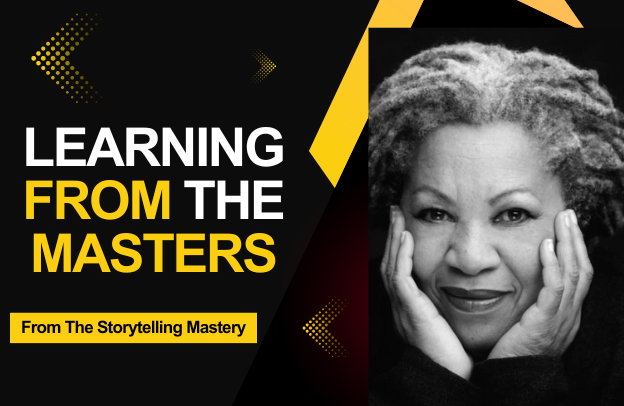Shoe Dog: A Memoir by the Creator of Nike

Shoe Dog: A Memoir by the Creator of Nike, Phil Knight, is the story of the visionary behind one of the world’s most iconic brands. The book unveils the secrets of his success through the lens of storytelling and effective narrative.
Want to learn more about storytelling? Start by downloading the first chapter of The Storytelling Mastery.
If you have read our articles and listened to our YouTube videos or read the five-part book series “The Storytelling Mastery”, you will see that we have referred to Nike on multiple occasions.
Now this is the point: storytelling sells more than every other tactic in sales put together and Nike has been very good at demonstrating this over the years.
About the book
Shoe Dog: A Memoir by the Creator of Nike is about the remarkable journey of Phil Knight, from his humble beginnings as a passionate runner to the founding of one of the world’s most iconic brands.
The narrative unfolds against the backdrop of the 1960s, a challenging era marked by social upheaval and cultural revolution. Determined to challenge the status quo and revolutionize the world of sports footwear, Knight embarks on a difficult quest to bring his vision to life.
Along the way, he faces a myriad of challenges, from financial crises and legal battles to personal setbacks and betrayals.
Yet, fueled by his relentless drive and unwavering belief in the transformative power of athletics, Knight perseveres, ultimately building Nike into a global powerhouse that transcends the realm of commerce to become a cultural phenomenon as we know it today.
As Knight’s journey unfolds, “Shoe Dog” offers readers the chance to see the trials and triumphs that shaped Nike’s trajectory.
From his fateful encounter with his business partner, Bill Bowerman, to the groundbreaking innovations that propelled Nike to the forefront of the industry, Knight’s memoir is a captivating story of entrepreneurship, innovation, and perseverance.
Now, here are three key lessons from Shoe Dog: A Memoir by the Creator of Nike. I hope that they can inspire you in your own journey because as has remained the slogan of the Obehi Podcast, everyone has a story to share:
1. Embrace Your Journey and Shape Your Story
In “Shoe Dog,” Knight paints a vivid picture of the challenging journey he embarked upon to build Nike from the ground up. From navigating legal battles to overcoming financial crises, Knight’s narrative is a demonstration of the resilience required to weather the storms of entrepreneurship.
Take, for instance, Knight’s relentless pursuit of a breakthrough in shoe design, which led him to Japan where he forged a transformative partnership with Onitsuka Tiger. This pivotal moment not only propelled Nike’s growth but also epitomized the power of perseverance in the face of adversity.
Application in Business
Embracing the journey entails embracing uncertainty and adversity as essential components of growth. By sharing stories of overcoming challenges and setbacks, businesses can humanize their brand and this will help them to foster empathy and trust among their audience.
See also Crafting a Compelling Brand Narrative: The Entrepreneur’s Guide to Building a Story that Sells
Whether it’s through blog posts, social media content, or marketing campaigns, companies can leverage storytelling to showcase their resilience and inspire loyalty.
Remember that there is no business without a story behind it. All it simply needs is the ability to shape that story in a way to truly resonates with the target audience. That is why the five-part book series, (The Storytelling Mastery) exists, to take you by the hands and show you how. And that leads us to lesson 2.
2. Learn to Cultivate Authenticity in Your Narratives
At the heart of “Shoe Dog” lies the authenticity that defines Nike’s ethos. Knight’s candid portrayal of the company’s early struggles and triumphs deeply resonates with the readers, and it helps to forge an emotional connection that transcends mere consumerism.
For instance, Knight’s decision to name the company “Nike,” inspired by the Greek goddess of victory, reflects his unwavering commitment to excellence and aspiration.
You can see this authenticity permeates every aspect of Nike’s brand identity, from its rebellious advertising campaigns to its groundbreaking product innovations. It’s always about the narrative.
Now this is the point for those who want to listen: It’s time to shift from excessive sales comments that exaggerate consumerism and instead promote human connection between brand and their clients.
That is, also, why we are continuously hammering the idea of storytelling in business because it’s what helps to create the needed human connection.
If you haven’t read my five-part book series, (The Storytelling Mastery) you can request a free chapter at AClasses.org/freechapter. But how do you apply this lesson in your business?
Application in Business
Think about it like this: Authenticity breeds authenticity. By weaving authentic narratives into your brand messaging, you can cultivate a genuine connection with your audience.
Whether it’s sharing your founder’s personal story, highlighting the company’s values, or showcasing customer testimonials, authenticity serves as a powerful catalyst for engagement and brand loyalty.
But how do you make people understand why you are on this journey? That is our lesson number three.
3. Champion the Power of Purpose
Throughout the book, Knight underscores the importance of purpose-driven entrepreneurship. Beyond the pursuit of profit, Nike’s mission to empower athletes resonates deeply with its target audience, inspiring a sense of purpose that transcends mere consumerism.
See also 65 Nike Best Inspirational Quotes To Get Your Day Started
Knight’s own passion for running serves as a driving force behind Nike’s relentless pursuit of innovation and excellence. This alignment between purpose and passion imbues Nike’s brand with a sense of authenticity and meaning that deeply resonates with its consumers worldwide.
Application in Business
Make no mistake about it: Purpose-driven storytelling has the power to transform businesses into movements. By articulating a clear and compelling purpose that resonates with their audience, companies can inspire action and foster loyalty.
Whether it’s through marketing initiatives, corporate social responsibility efforts, or brand manifestos, businesses can harness the power of purpose to create meaningful connections with their customers.
Let me reiterate that by incorporating these principles into your own narrative, you can forge deeper connections with your audience, driving better engagement, and long-term success.
As Phil Knight’s extraordinary journey exemplifies, the power of storytelling lies not only in its ability to captivate but also in its capacity to inspire and transform.
The role of resilience in business success
Resilience is an indispensable pillar for business success. It serves as a guiding force in navigating the turbulent waters of entrepreneurship.
In the volatile landscape of commerce, unforeseen challenges, setbacks, and obstacles are inevitable, yet it is the capacity to rebound, adapt, and persevere in the face of adversity that distinguishes thriving enterprises from those that falter.
Resilience empowers businesses to weather storms, pivot strategies, and emerge stronger from setbacks. It embodies the adage that it is not the absence of challenges but the ability to overcome them that defines true resilience.
So, whether you are confronted with economic downturns, technological disruptions, or global crises, resilient businesses always demonstrate agility, resourcefulness, and tenacity in their pursuit of long-term objectives.
See also Navigating Responsible AI: A Blueprint for Business Ethics in the Digital Age
I understand that some might lack the power of resilience. But don’t worry because this is something you can develop. Now, here are three ways to approach it:
Get used to Adaptability and Flexibility
Resilient businesses exhibit a remarkable capacity to adapt and pivot in response to changing circumstances. Whether it’s when facing market fluctuations, technological advancements, or unforeseen disruptions, adaptable companies remain agile and responsive. They proactively adjust their strategies, operations, and offerings to align with evolving demands.
By fostering a culture of flexibility and openness to change, resilient organizations empower employees at all levels to embrace innovation, experiment with new approaches, and capitalize on emerging opportunities.
What this ultimately translates to is that adaptability enables businesses to stay ahead of the curve, mitigate risks, and position themselves for sustained growth amidst uncertainty. This leads us to another important consideration, contingency planning.
Risk Management and Contingency Planning:
Resilient businesses prioritize proactive risk management and contingency planning to mitigate potential threats and safeguard against adverse outcomes. By conducting comprehensive risk assessments, identifying vulnerabilities, and developing robust contingency plans, organizations can preemptively mitigate the impact of crises and disruptions.
As a business owner, learning to be resilient helps cultivate a culture of preparedness and resilience across all facets of business operations. That includes empowering employees with the right tools, training, and resources needed to respond effectively to unforeseen challenges.
Make sure you don’t underestimate this. Through prudent risk management practices and agile decision-making processes, you can enhance your ability to navigate uncertainties and bounce back from setbacks with resilience and confidence. The last but not the least point is about Relationships and Networks and it’s fundamental for business success.
Building Strong Relationships and Networks
Resilient businesses recognize the value of building strong relationships and networks with stakeholders, including customers, suppliers, partners, and industry peers.
By fostering open communication, collaboration, and trust, organizations can forge resilient ecosystems that provide mutual support and solidarity during times of crisis.
Learning to build strong relationships will enable you to leverage collective expertise, resources, and insights to overcome challenges and seize opportunities collaboratively.
You can do this through strategic partnerships, alliances, and industry affiliations, resilient. This is how businesses can easily diversify their sources of support, enhance their resilience to external shocks, and fortify their competitive position in the marketplace.
See also Africa’s Emergence in Semiconductor Supply Chains: The Power of Strategic Partnerships
So, I encourage you to nurture strong relationships and networks as a way to cultivate a resilient foundation and weather storms, adapt to change, and thrive in the face of adversity.
Conclusion on Shoe Dog: A Memoir by the Creator of Nike
As you have learned today, resilience is not merely a characteristic of successful businesses; it is the lifeblood that sustains them through adversity and propels them toward enduring success.
In today’s dynamic and ever-changing business landscape, resilience is not just a desirable trait, instead, it’s an indispensable asset that empowers organizations to thrive amidst challenges and uncertainties. So, learn to take advantage of it.
Want to learn more about storytelling? Start by downloading the first chapter of The Storytelling Mastery.






